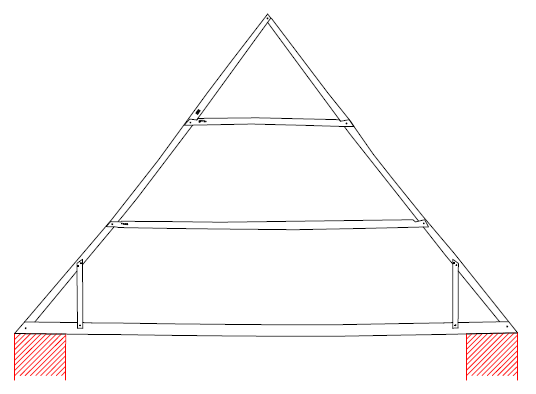DE, Romanesque churches and their roofs in Eastern Frisia
The cultural landscape of the East Frisian peninsula is characterized by a variety of impressive high and late medieval village churches, especially in the rich marsh areas.
Most of the churches were built from bricks, sometimes imported tuff was used too. A specialty which can be found east of the bay of the river Harle, are the imposing churches built from granite ashlar masonry. Those aisleless churches show beam ceilings predominantly while arched ceilings are less common. During the 12th/13th century the churches which exist up to today were built instead of predecessor buildings made from timber, showing not only that Christianity had become more common and well organized, but also showing municipal self confidence, wishes for representation and economic power. In order to estimate and convey the importance of such cultural treasures appropriately, it is vital to know about their building history. But knowledge about exact datings is missing and cannot be substituted adequately by stylistic comparison or rare archival evidence, like benediction dates. A pursuable way to improve knowledge is a systematical dendrochronological survey of constructional timbers, especially from roofs, which is able to date at least the end of building operations exactly. Even traces of repairs and building alterations may be recognized, which cannot be easily detected otherwise.


Interesting and encouraging results during the preliminary stages caused the motivation for more dendrochronological research. With financial support of Marschenrat, Gerd Möller Foundation, Wilhelmshaven and Niedersächsisches Landesamt für Denkmalpflege, Hannover, 50 roofs could be investigated from 2010 to 2011. The first results were published in No. 48 of Marschenratsnachrichten, pp. 9-17. A version in PDF may be downloaded here. Work will be continued in 2012.
Text: Volker Gläntzer, Erhard Preßler. Photographs and drawings: Erhard Preßler.






